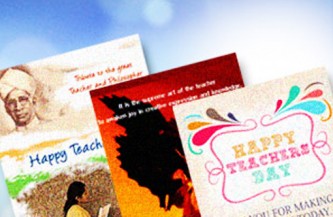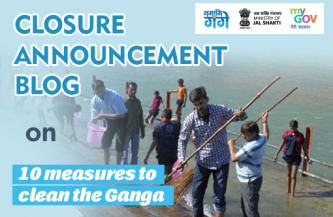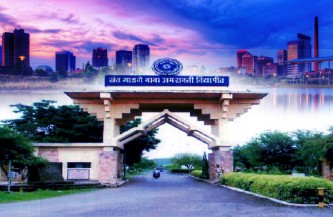In the footsteps of Adi Shankaracharya: Realising the vision of Ek Bharat Shreshtha Bharat

More than 1,200 years ago, Jagatguru Shankaracharya travelled the four corners of this great land and brought the different practices of Hinduism together under a single umbrella and established four peethas (seats) as spiritual capitals in the four corners of India. Inspired from his real life experiences, and his encounters with individuals such as Chandala he espoused the spirit of equality and oneness making him one of the earliest social reformers who fought caste discrimination.
Adi Shankaracharya’s unparalleled wisdom has left an indelible mark on our society. The culture of learning and healthy discussions in our society, especially among our youth is one of the greatest enduring legacies of the Shankaracharya. As the great Adi Shankara accomplished so much at such a young age, one aspect that is not discussed enough is his efforts in unifying the land as one nation – geographically, culturally and socially. As he united the various branches of Hinduism, he also inherently brought the people of diverse cultures and languages together. In his travels from Kanyakumari to Kashmir, Adi Shankara was India’s first ambassador for ‘Ek Bharat Shreshtha Bharat’.
Today, as we celebrate Adi Shankara’s birth anniversary, it is also a time to further delve into the enabling factors and the concrete steps that the Government has made in taking Adi Shankara’s message forward through the mission of Ek Bharat Shreshtha Bharat, forward.
Development as an enabling factor towards Unity
The two regions that have seen rapid development at a breakneck speed are Jammu and Kashmir and the Northeastern states. In August 2019, The Government of India abrogated Article 370. Before the abrogation of Article 370, Kashmir, the land of Sage Kashyapa, did not enjoy the same rights as the rest of India. Women were not allowed to inherit property, Safai Karamcharis were not entitled to resident status and important rights such as Right to Education and Right to Information were not implemented.
Today, Jammu and Kashmir is seeing a complete transformation. 53 projects across 15 Ministries are being implemented at a cost of approximately Rs.60,000 crores under the Prime Minister’s Development Package. 100% saturation has been achieved in close to 20 Individual beneficiary centric schemes, including Saubhagya, Ujala, Ujjwala and Indradhanush schemes. The Zojila tunnel that is being constructed will be Asia’s longest bidirectional tunnel at 14 kilometres and will establish all-weather connectivity between Ladakh and Jammu and Kashmir. In this atmosphere of peace and development, domestic tourists to Jammu and Kashmir have crossed pre-pandemic levels with a record 1.84 crore domestic tourists visiting.
Similarly, The Government has spent Rs 5 lakh crore in the North east region in the last 9 years. Spearheading the efforts, Indian Railways, in the last 9 years has spent over Rs 50,000 Crores in the region on building new railway lines, bridges, tunnels etc. and has sanctioned new projects close to Rs 80,000 Crores. As part of this, India is building the Jiribam – Imphal rail line which has the world’s tallest pier bridge at a height of 141 metres. This was possible because the government of India created an enabling environment of peace. With sheer political will and leadership, decades-old standoffs are being resolved – the Naga Framework Agreement and the tripartite agreement on the rehabilitation of the Reang (Bru) community are a few such initiatives.
Left wing Extremism in the forest corridor between Bihar and Andhra Pradesh played a major role in disrupting our Unity. The Government has combated Left Wing Extremism on the front foot and as a result, the number of Left wing extremism related violent incidents in the country have come down by 77% in 2022 in comparison to a high in the year 2010. The Government of India in the last 4 years has spent more than Rs. 2,000 crores combating naxalism reducing the Left wing extremism affected Districts to just 25.
Today, investors are coming to the North East, Jammu and Kashmir and areas which were previously affected by Left Wing Extremism because there is peace. Undoubtedly, peace and stability is also one of the most important ingredients of Unity. On top of this the Government is facilitating youth and regional cultural exchanges.
Cultural Exchanges that ensure geographical, cultural and social unity
The Ministry of Culture’s Vitasta programme showcases the rich culture, arts and crafts of Kashmir. It also extends the historical identity of Kashmir to other states and is a symbol of the spirit of ‘Ek Bharat Shreshtha Bharat’. In November last year, Prime Minister Narendra Modi inaugurated ‘Kashi Tamil Sangamam’ in Varanasi to celebrate, reaffirm and rediscover the age-old links between Tamil Nadu and Kashi – two of the country’s most important and ancient seats of learning. More than 2500 delegates from Tamil Nadu visited Kashi. During the programme, the Prime Minister also released the translation of ‘Thirukkural’ into 13 languages.
In similar lines, the Saurashtra Tamil Sangam aims to promote the rich cultural heritage of the Saurashtra community living in Tamil Nadu. It also provides a platform for Saurashtrians in Tamil Nadu to connect with their brethren in Gujarat and to celebrate their shared traditions and values. The linkages between Somnath and Somasundareshwarar reflects the rich cultural heritage of both regions.
Since 2018, during the period of Ram Navami, the Government of Gujarat in association with the Ministry of Culture and Ministry of Development of Northeastern Region (DoNER) has been organising the Madhavpur Ghed Fair. This festival celebrates the sacred union of Lord Krishna and Rukmini. The marriage of Shri Krishna and Rukmini illustrates the cultural unity of India and exemplifies the prevalence of social harmony since time immemorial. In fact the story of Lord Krishna and Rukmini is a story of contemporary India – Uttar Pradesh as his janmabhoomi, Shri Krishna made Gujarat his karmabhoomi and went on to marry Rukmini, a princess from today’s north-eastern region of our country.
Further, youth cultural exchange tours are being conducted under ‘Yuva Sangam’ to bring strong cultural ties among the youth of the North East and the rest of the country. At least, 16 union ministers visit the NER every month to reach out to the people, interact with them, monitor implementation of schemes and undertake immediate action to resolve issues. The Prime Minister himself has visited the North East around 60 times since assuming office in 2014.
Adi Shankaracharya embarked on a great and noble journey more than 1200 years ago. This Government continues to build on this in ensuring that the geographical, cultural and social unity of this country is preserved for eternity. Today is an apt moment to recognize the first ambassador of Ek Bharat Shreshtha Bharat.
Author: Shri G Kishan Reddy, Union Minister of Culture, Tourism and Development of Northeastern Region and represents Secunderabad Lok Sabha Constituency)





